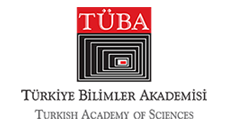Global Transformations and Türki̇ye’s Middle Power Grand Strategy
Global Transformations and Türki̇ye’s Middle Power Grand Strategy
In today’s new Cold War, the return of great power rivalry has emerged in a different fashion and context. This perception of the new situation has started to be described in the West as a new stand-off between the free world (USA-EU) and Russian-Chinese authoritarianism. However, a closer look at world affairs reveals a more complex picture, where the activism of new middle powers appears as a significant driving force reshaping the international environment. Since the 1990s, there has been confusion in IR literature regarding the conceptualization and categorization of middle powers, as well as their similarities and differences. This situation remains relevant today. Grand Strategy is mostly associated with great powers; however, the present uncertainty stemming from great power rivalry has forced middle powers to seek ways to lessen their exposure to systemic risks. Hence, they have developed different domestic capabilities to overcome these challenges. At the same time, the recent observable shift in international order has surely allowed enough room for middle powers to influence emergent regional orders and beyond. This newly observed middle power activism, operating in the new multipolar system, has started a debate among IR scholars about the differences between traditional and newly emergent middle powers. However, what is more important today is to diagnose the radical changes that have come about in today’s middle powers. During the Cold War years, middle powers had to adjust themselves to the plans of great powers, but today it is the USA, China and Russia that need to manage a world influenced by middle power activism. Hence, in the first section of this paper, a brief look will be given to different definitions of middle powers, both traditional and new. In light of today’s middle power activism, it is also necessary to briefly mention the availability of alignment strategies of middle powers. Next, the focus will shift to why middle powers, like great powers, deserve to develop a grand strategy. Finally, referencing Ramon Pacheco Pardo’s model of middle power grand strategy (Pardo, 2023, pp. 1-336), the main contours of Türkiye’s grand strategy will be outlined.
Click to cite.
Note: You can access the citation text via the ‘Actions’ tab in Crossref.
